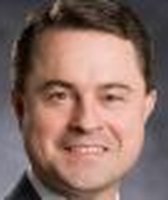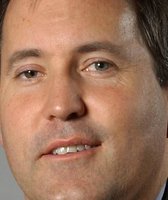Stand up for the facts!
Our only agenda is to publish the truth so you can be an informed participant in democracy.
We need your help.
I would like to contribute
Jim Marston says Texas leads the nation in fatal industrial accidents
Five days after the fertilizer plant explosion that killed 14 in West, talk turned to safety regulation at the Texas Tribune’s morning interview series.
Jim Marston, founding director of the Texas office of the Environmental Defense Fund, opined from the Tribune stage on April 22, 2013, that state regulation should have prevented the deaths. In Texas, "we lead the nation in fatal industrial accidents," he said.
To support his statement, he referred us to Elena Craft, a toxicologist with the fund, who told us by phone that the information came from a Sept. 20, 2012, U.S. Bureau of Labor Statistics report.
That report, though, was on 2011 fatal occupational injuries -- including intentional acts such as murder and suicides and spanning, bureau economist Steve Pegula told us by phone, "every occupation in the U.S."
Pegula told us the bureau does not use the term "industrial accidents" and has no definition for it. Others we talked with for this story used phrases such as "an accident that arises out of the course of employment" or "workplace event that results in multiple fatalities."
Sign up for PolitiFact texts
"Industrial," we found, could be defined as narrowly as manufacturing or as broadly as any business at all.
The bureau tally, Pegula said, includes deadly events or exposure on or off an employer’s premises during or related to the employee’s job or work status. For example, the deaths of farmers, police or nurses are included if they take place on the job or related to their work. Not included are illnesses or events such as heart attacks or strokes, because onsets can be delayed and it can be hard to prove the connection to employment, Pegula said.
Via email, Marston told us that although his claim had been based on the total deaths in the bureau’s count, "I do agree with you that not all fatal occupation injuries listed in the BLS data can be attributed to poor environmental compliance." Texas, he said, had the most deaths tabulated by the bureau in four areas he described as "fatal industrial accident categories": fires and explosions; falls, trips and slips; exposure to harmful substances or environments; and contact with objects and equipment.
Representatives of groups we spoke with -- the American Federation of Labor and Congress of Industrial Organizations (AFL-CIO), the National Safety Council and the Texas-based Workers Defense Project -- told us the bureau’s Census of Fatal Occupational Injuries, which generated the figures Marston relied on, was the most comprehensive source of data on occupational injuries and deaths.
Pegula said the Sept. 12, 2012, report gave preliminary 2011 data, "which is going to differ slightly" from the final numbers, "but it’s a good guiding post."
Of the six types of event or exposure the bureau listed, Texas led in five -- the four Marston tabbed as "industrial accident categories" plus the transportation category. California led in deaths caused by violence and other injuries by persons or animals.
The report showed Texas had 18 of the nation’s 143 work fatalities attributed to fires and explosions; 67 of the total 666 from falls, slips and trips; 43 of the 401 caused by exposure to harmful substances or environments; and 66 of 708 deaths resulting from contact with objects and other equipment.
California had the second-most in each of Marston’s four categories: 9, 60, 36 and 50 deaths, respectively. Third in fires/explosions was Tennessee with 10; third in falls and slips was New York with 39; third in harmful exposure was Florida with 27; and New York was third in object/equipment contact deaths at 34.
We looked at preliminary data for 2003 through 2010 and found Texas led those categories about 88 percent of the time.
Texas’ totals are high, Pegula said, "because it’s a very large state." Texas, California, Florida and New York have some of the largest labor forces in the U.S.
Seeking a way to account for that, we took each state’s 2011 raw numbers of deaths in the four categories Marston tabbed, added them together, then divided by the average number of workers employed in the state in 2011 per the federal bureau.
Featured Fact-check
Texas ranked 18th, with a rate of 1.7 such deaths per 100,000 workers. Observing that the five states with the "worst" rates all employed fewer than 1 million people in 2011, we checked to see how Texas fared among states employing more than 1 million. The answer: 10th place.
"Worst" among all 50 states were Montana (3.4 deaths per 100,000 workers), North Dakota (3.3), West Virginia (3), Alaska (3) and New Mexico (2.8). "Worst" among states with more than 1 million employed were Arkansas (2.6), Louisiana (2.3), Kansas (2.3), Missouri (2.1) and Kentucky (2).
Pegula at the federal bureau cautioned against comparing states, especially with such small amounts of data as the fatalities in specific categories. Not only the number of workers but also the industries represented vary widely from state to state, he said.
The big difference in population sizes, Marston said, causes variability in comparing the rates -- one reason he chose to use raw counts rather than per-capita rates.
Marston said he stands behind his statement "as true and accurate using the best available data."
Our ruling
Marston said that in Texas, "we lead the nation in fatal industrial accidents."
Among the states, Texas ranked No. 1 in 2011 in the number of workplace deaths in four federal categories Marston tabbed as "industrial accident" deaths. Yet these results drew on raw counts of deaths, unadjusted for variations in state workforces. Our adjustment for each state’s relative workforce suggests that Texas, per worker, ranked 18th among the states in 2011.
We rate his statement as Half True.
Our Sources
Texas Tribune event, "A Conversation about the Environment," April 22, 2013
Telephone and email interviews, excerpted, with Jim Marston, Texas chapter, Environmental Defense Fund April 22-May 3, 2013
Telephone interview with Elena Craft, toxicologist, Texas chapter, Environmental Defense Fund, April 22, 2013
U.S. Bureau of Labor Statistics report, "National Census of Fatal Occupational Injuries in 2011 (Preliminary Results),", Sept. 20, 2012
Telephone interviews with Steve Pegula, economist, Bureau of Labor Statistics, April 26-May 3, 2013
Browse the Truth-O-Meter
More by Sue Owen
Jim Marston says Texas leads the nation in fatal industrial accidents
Support independent fact-checking.
Become a member!
In a world of wild talk and fake news, help us stand up for the facts.



























































